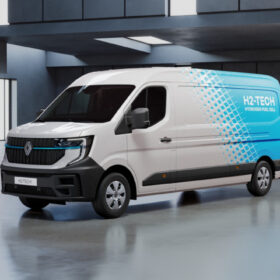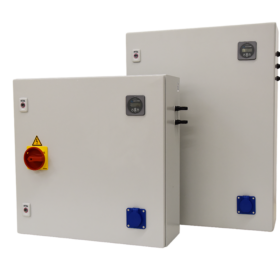Dandelion unveils residential geothermal heat pump with coefficient of performance of 5.2
The novel heat pump can reportedly heat air to up to 49 C. Its full-load heating capacity is of up to 63,000 Btu/hour.
Most home battery storage systems meet warranty claims, new research finds
It took eight years of field measurements for researchers at the RWTH Aachen University in Germany to estimate the usable capacity of home battery energy storage systems and develop a dataset covering 106 system years and 14 billion datapoints. Their key finding was that home battery systems lose about two to three percentage points of usable capacity per year on average, meaning good news for the industry as most warranties in the market can be met with the implementation of capacity reserves.
Banking on batteries in Chile
The Chilean solar market is booming but as curtailment grows, a hybrid approach to generation is gaining ground. Storage project announcements are coming thick and fast as co-location with wind turbines offers cost efficiency and a smoother generation profile. Meanwhile, new capacity mechanism rules could take Chile one step closer to runaway battery growth.
Huawei unveils world’s largest microgrid
China’s Huawei has built a 400 MW/1.3 GWh solar-plus-storage off-grid facility in Red Sea New City, Saudi Arabia.
How to increase coefficient of performance in two-stage cascade heat pumps
A group of researchers in Thailand outlined a new methodology to identify the optimal temperature in two-stage cascade heat pumps using non-azeotropic refrigerants. Through their analysis, the scientists found that the coefficient of performance for simultaneous heating and cooling is affected by the pinch point temperature at the cascade heat exchanger, with lower temperature levels being responsible for a higher COP.
India’s stored potential
Renewable Energy Expo India (REI) returns to Greater Noida at the start of October, for what will be its 17th edition. For the second year running, The Battery Show India will run concurrently with REI. pv magazine had the chance to catch up with Julian Thomas, Senior Project Director at show organizer Informa Markets, to discuss why electric vehicles and energy storage are now the key to India’s energy transition.
Large-capacity battery storage, variety of C&I solutions at China’s EESA EXPO
This year’s edition of the China International Energy Storage Expo (EESA EXPO) has underlined the latest energy density achievements in the battery energy storage space on both cell and system levels. Meanwhile, the sheer number of commercial and industrial (C&I) systems on display spoke of growing demand in this market segment. Alternative lithium-ion battery chemistries were not easy to find.
The Hydrogen Stream: Ballard restructures, Forvia supplies hydrogen tanks
Ballard Power Systems says it has started restructuring its global operations to cut costs due to slower hydrogen infrastructure development and delayed fuel cell adoption.
Hungary’s residential PV subsidy scheme draws 20,000 applicants
The Hungarian government says 20,000 households have signed up for its PV subsidies scheme, which offers up to HUF 5 million ($14,125) per home installation. The original HUF 75.8 billion budget was increased by HUF 30 billion in July.
Solar cabinet for water disinfection systems
German fluid management company Lutz-Jesco introduced a system aimed at supporting pumping and water disinfection in cases of blackouts. The hub is preconfigured to work with solar panels, a battery charge controller, an inverter, and cabling.










